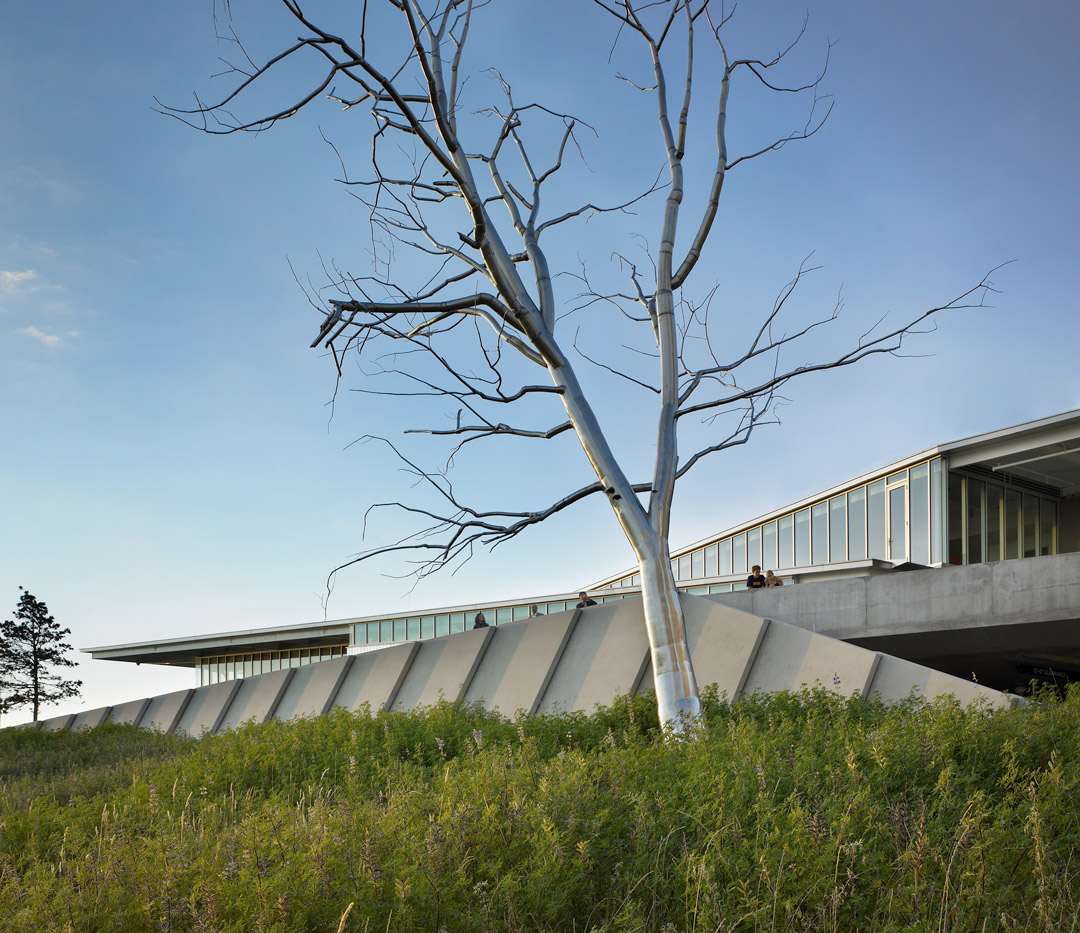Virtual Tour with Mary Wallace
SAM Docent, Mary Wallace is taking us to Seattle’s waterfront to wander the Olympic Sculpture Park and do some close looking at the monumental sculptures that call the park home. Mary Wallace is one of SAM’s talented and trusted docents. Docents volunteer a ton of their time learning about the art at SAM to lead tours for art lovers of all ages. While we can’t have in-person tours at the moment, we hope you will follow Mary’s tour on your phone the next time you visit the Olympic Sculpture Park.
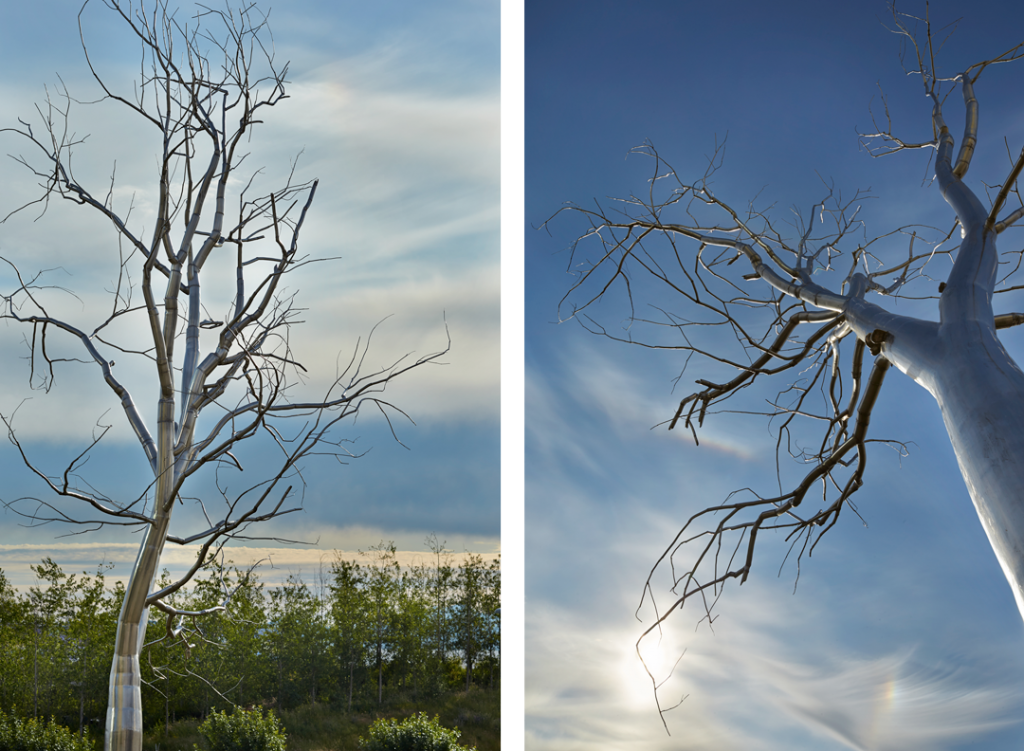
We’ll start first with a big shiny tree. It is called Split and it is a tree made of steel. The branches are made of 20 different sizes and the tree was designed by artist Roxy Paine on a computer. Look closely and notice lines, shapes, colors, and texture. Compare Split to the Garry Oak that’s planted next to it. Make a list of the similarities and differences between these two trees. What about the sculpture looks real? What looks unreal? Is this tree realistic or abstract? Think about a way to describe this shiny tree. If you touched it, how would Split feel? Can you smell it? Could you taste it? You can see it. Could you hear wind going through its branches? Would the branches move? Why do you think the artist made this tree? The artist, Roxy Paine, likes to make artificial versions of nature. He thinks it is interesting to control nature and this is his way of doing it. What are other ways that we control nature: building dams, burning forests, having wolves go back into forests. Would you like to have a tree like this in your yard? Why do you think it is called Split?
Take a picture of this tree with your mind and pack up your senses. What were those senses again? Put it all in your memory bank. We are going down this hill and into that greenhouse where we will meet another tree.
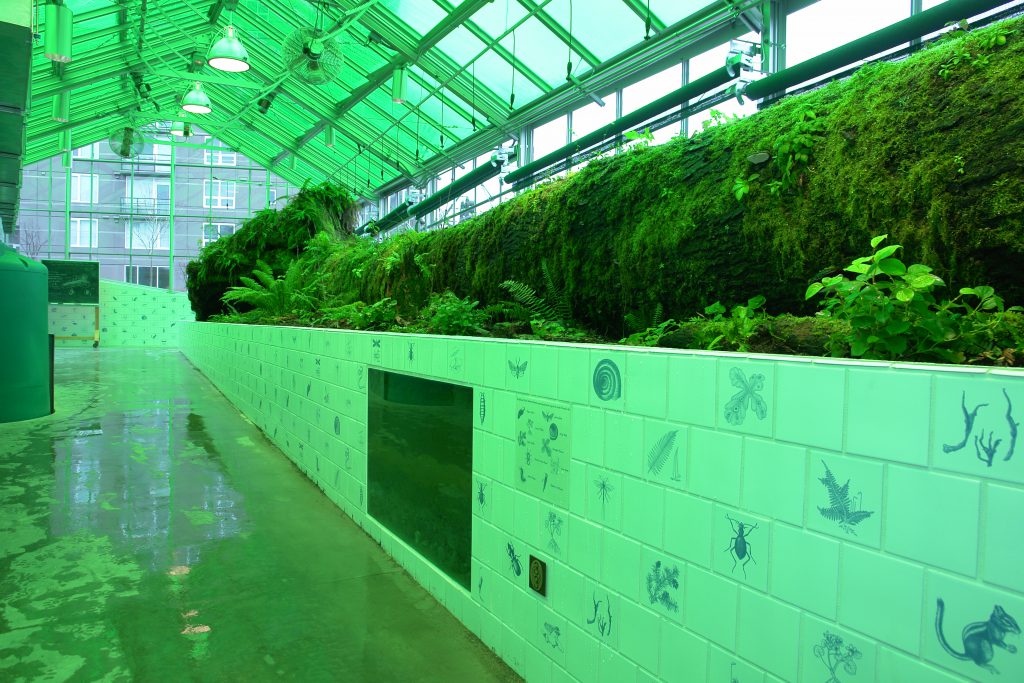
Welcome to Neukom Vivarium where a nurse log lives.
Once upon a time, there was a beautiful tall evergreen tree that was about 100 years old. One winter there was a lot of snow, and rain, and wind and the tree was blown back and forth for many days. Eventually it was blown down. It laid on the forest floor for about 10 years growing all sorts of things on it. One day, an artist named Mark Dion, saw it and decided that it must go to live in a museum. It lives inside this building now. But how does it live if it cannot get rain, sun, wind and soil? Look around and find the sprinklers, the green tinted glass and the fans.
Once a year, a gardener brings dirt to put all around the tree. How is this tree like the one you just saw? How is it different? Is this tree alive or is it a dead? Is it an artificial tree like you just saw? If it is dead, how come things are growing out of it? What do you think is going on here? This is a nurse log and it is decomposing all the time. That is how things grow from it. What is decomposing and what makes it decompose? Since it is decomposing all of the time to support new growth, eventually this nurse log will disappear. Any stick that has growth of moss, lichen, or fungi is also a kind of nurse log. Is this art or is it nature? Do you wonder if this was a good idea to bring this tree out of the forest and put into a museum? Why do you say that?
Remember what Split looked like and what the nurse log looked like. Which one would you like to have in your back yard? Make room for this nurse log next to Split in your memory bank.
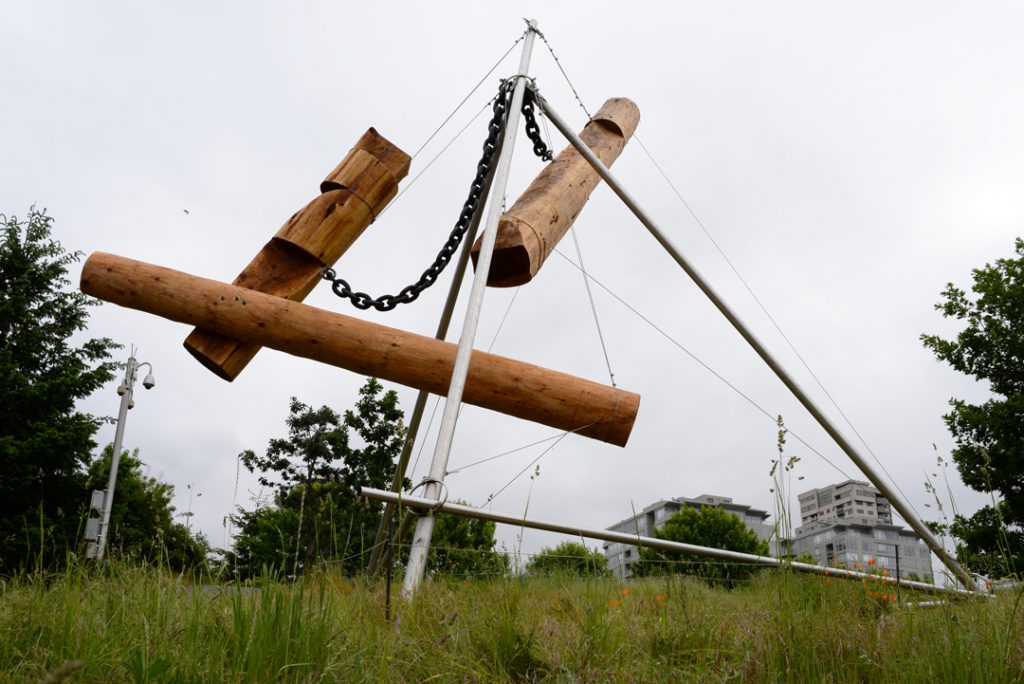
Walk uphill through the Meadow. You’ll pass a big red sculpture on the right, called The Eagle as you head to the big sculpture at the end of the path on the left. Stop once or twice to look at it as you walk. How does it change as you get closer? What shapes, colors, textures, materials do you see? Is the piece realistic or abstract? What do you make of this? Why do you say that? What does it remind you of? Why would the artist make this? What would you call it?
Its name is Bunyon’s Chess. What senses are you using to enjoy this? Sight for sure, and maybe the smell of the salty air that surrounds the art. The artist likes to use wood to remind you of forests and waters that keep them green and healthy. He also likes to use materials like steel and wood from buildings that have been torn down. The artist likes for his sculptures to move. When the wind is strong, what part of this sculpture do you think moves?
Add Bunyon’s Chess to your memory bank and leave room for one more sculpture.
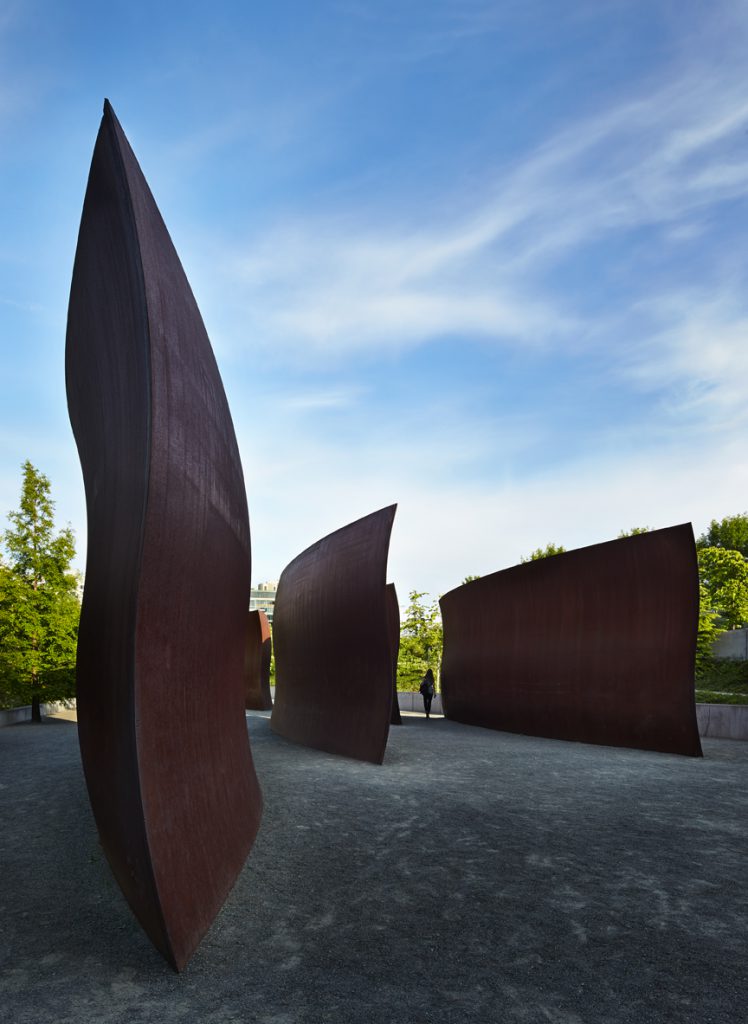
Walk east and down the steps into the Valley. There is a large sculpture in front of you. Think about describing it: color, shapes, texture, materials. Is it realistic or abstract? Walk down the steps to the gravel. What senses will be used to look at this piece: sight, and maybe the smell of the trees and plants around it. We can’t touch, but what does your sight tell you about how the surface might feel? How is it like Bunyon’s Chess that you just left: both are made of steel. Richard Serra is the artist who made this piece and he calls it Wake. What are three definitions of the word, wake: wake up, wake from a boat, a ceremony to honor a dead person. The artist made this piece in honor of a friend who died.
There are five parts of Wake and the artist invites you to run and/or walk through them. Remember to look up to the sky as you do. When you get to the other end, share how you felt and what you thought going through it. Why did the artist make five parts instead of one? How would it feel going around just one part? Did it look different when you got to the other end? Is Wake realistic or is it abstract art?
There are steps on the left. Go up those steps towards the building at the top. Stop twice on your way up, turn around and look at Wake. Does it look different? Why do you say that? Go to the railing at the top and look back at Wake. How does Wake look from the railing? Do you see anything different in the top of Wake?
How are Bunyon’s Chess and Wake alike and how are they different? Which one would you like to have in your yard?
Have a seat in the grass or in the red chairs outside of the PACCAR Pavilion. Sit and look at the views. Think about one thing you will remember from your tour today. Think about the reasons to remember them. Was it because of the story, or the way the sculptures were alike or different, or the shapes you saw, or the materials, or the way it made you feel? Take one sweeping view of the Olympic Sculpture Park as you leave and wave goodbye to all of the art you saw.
– Mary Wallace, SAM Docent
